
Probability Uncertainty and Quantitative Risk
Scope & Guideline
Transforming Uncertainty into Knowledge and Solutions
Introduction
Aims and Scopes
- Stochastic Processes and Differential Equations:
The journal extensively covers stochastic processes, particularly backward stochastic differential equations (BSDEs) and forward performance processes, exploring their applications in risk management and financial modeling. - Quantitative Risk Assessment:
Emphasizing quantitative methods, the journal publishes research on risk measures, asset pricing, and capital allocation strategies, contributing to the development of robust frameworks for assessing financial risks. - Mean Field Games and Control Theory:
A significant area of focus includes mean field games and control theory, addressing complex systems and strategic interactions among agents, which are crucial in financial markets and economic modeling. - Numerical Methods and Computational Techniques:
The journal also delves into numerical analysis and computational approaches for solving stochastic equations, which are essential for practical implementations in financial risk management. - Applications in Finance and Insurance:
Research highlighting the application of theoretical concepts to real-world problems in finance and insurance, including investment strategies, insurance pricing, and liquidity models, is a core aspect of the journal's scope.
Trending and Emerging
- Advanced BSDEs and Forward Performance Processes:
There is a growing interest in advanced backward stochastic differential equations and forward performance processes, reflecting the need for sophisticated tools in risk management and investment strategies. - Mean-Field and Game Theoretical Approaches:
The application of mean-field theory and game-theoretical models is on the rise, indicating an expanding appetite for understanding complex systems with numerous interacting agents in financial contexts. - Deep Learning and Computational Methods:
The integration of deep learning techniques into stochastic modeling and risk assessment is emerging as a significant trend, showcasing the journal's responsiveness to technological advancements in quantitative finance. - Dynamic Portfolio Management Strategies:
Research focusing on dynamic portfolio selection and optimal liquidation strategies is increasingly prevalent, reflecting the demands of modern financial markets for adaptive investment approaches. - Uncertainty Quantification and Robust Decision-Making:
Emerging themes in uncertainty quantification and robust decision-making highlight the importance of addressing model uncertainty and its implications for financial and risk management.
Declining or Waning
- Classic Risk Measures:
Traditional risk measures such as Value-at-Risk (VaR) and Conditional Value-at-Risk (CVaR) have seen a reduction in focus, possibly due to the rise of more advanced and nuanced methodologies that address limitations in these classic measures. - Basic Stochastic Calculus Techniques:
There has been a noticeable decline in papers solely focusing on foundational stochastic calculus techniques, as the journal transitions towards more complex applications and interdisciplinary approaches. - Static Models of Financial Markets:
Research centered around static models that do not account for dynamic interactions or uncertainties appears to be waning, as the field increasingly favors dynamic and adaptive modeling frameworks.
Similar Journals

SIAM Journal on Financial Mathematics
Elevating Financial Analysis with Cutting-Edge MathematicsThe SIAM Journal on Financial Mathematics, published by SIAM PUBLICATIONS, is a premier journal dedicated to the intersection of applied mathematics and finance. With an ISSN of 1945-497X, this journal serves as a vital platform for the dissemination of innovative research that addresses complex financial problems through mathematical modeling and analytical techniques. The journal has established itself within the Q2 quartile in the categories of Applied Mathematics, Finance, and Numerical Analysis, reflecting its influence and significance in these fields. Researchers and practitioners will find a wealth of knowledge spanning topics from stochastic calculus to quantitative finance, making it essential for anyone aiming to advance their understanding of financial mathematics. As the journal continues to converge from 2010 to 2024, it promises to remain a cornerstone resource for academics, professionals, and students alike, facilitating the ongoing dialogue between mathematics and its applications in the financial industry.
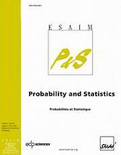
ESAIM-Probability and Statistics
Advancing insights in probability and statistics.ESAIM-Probability and Statistics, published by EDP Sciences S A, is a prominent journal focused on advancing the field of probability and statistics. With an ISSN of 1292-8100 and E-ISSN 1262-3318, this journal has been a beacon of scholarly communication since its inception in 1997. Operating out of France, it offers a platform for researchers and professionals to share significant findings and foster collaboration within the statistical community. Designated as Q3 in the Statistics and Probability category for 2023, it plays a vital role in the dissemination of critical research, despite its recent Scopus ranking of 226 out of 278 indicative of its growing visibility and impact. Researchers, students, and professionals alike benefit from its rich pool of analytical insights and innovative methodologies, marking it as an essential resource for those immersed in statistical theory and applications. With a commitment to excellence in research, ESAIM-Probability and Statistics continues to contribute to the instructional and professional development of its readership.

International Journal for Uncertainty Quantification
Navigating the unknown with cutting-edge research.International Journal for Uncertainty Quantification, published by BEGELL HOUSE INC, is a leading platform dedicated to advancing the field of uncertainty quantification across various mathematical and engineering disciplines. With an ISSN of 2152-5080 and an E-ISSN of 2152-5099, this esteemed journal offers a rich repository of research that informs and enhances methodologies in Discrete Mathematics and Combinatorics (Q1), Control and Optimization (Q2), Modeling and Simulation (Q2), as well as Statistics and Probability (Q2). The journal holds impressive Scopus rankings, with notable placements such as Rank #5 in Discrete Mathematics, underscoring its influence and reach among its peers. The objective of the journal is to provide a comprehensive forum for researchers and practitioners to share innovative ideas, theoretical advancements, and practical applications related to uncertainty quantification. Although it is not an Open Access journal, it remains pivotal for the academic community, continually addressing the complexities associated with uncertainty across multiple fields. For scholars and professionals looking to stay at the forefront of research and applied methodologies, the International Journal for Uncertainty Quantification is an indispensable resource.

MATHEMATICAL FINANCE
Bridging Disciplines for Financial ExcellenceMATHEMATICAL FINANCE is a prestigious journal published by Wiley, focusing on the interdisciplinary fields of finance, applied mathematics, accounting, and economics. With its ISSN 0960-1627 and E-ISSN 1467-9965, this journal has earned its place in the top tier of academic publications, reflected by its Q1 rankings across multiple categories in 2023, including Accounting, Applied Mathematics, Economics and Econometrics, Finance, and Social Sciences. MATHEMATICAL FINANCE, which commenced publishing in 1991, is recognized for its rigorous peer-review process and its significant contribution to the advancement of knowledge in quantitative finance methodologies and risk management practices. Although it does not currently offer open access, the journal remains an invaluable resource for researchers, professionals, and students seeking to stay abreast of the latest theoretical advancements and empirical studies in mathematical finance. Its impact factor and Scopus rankings further illustrate its high standing within the academic community, making it an essential platform for impactful research and scholarly discourse.
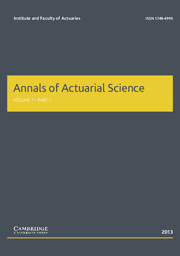
Annals of Actuarial Science
Driving excellence in actuarial practice and decision-making.Annals of Actuarial Science, published by Cambridge University Press, stands as a prominent academic journal in the fields of economics, statistics, and actuarial science. With an ISSN of 1748-4995, it features rigorous research aimed at advancing knowledge and practice in areas related to risk management, data analysis, and probability. The journal is recognized for its significant impact, holding a Q2 category ranking in both Economics and Econometrics and Statistics and Probability, along with notable positioning within Scopus rankings. Although it does not currently offer open access, its comprehensive selection of scholarly articles from 2010 to 2024 remains invaluable to researchers, professionals, and students alike, providing insights that drive the actuarial profession and enhance decision-making processes across various sectors. Positioned at the intersection of theoretical innovation and practical application, the Annals of Actuarial Science continues to shape the discourse and development of its disciplines.

ADVANCES IN APPLIED PROBABILITY
Transforming Data into Decisions through Advanced ProbabilityADVANCES IN APPLIED PROBABILITY is a prestigious academic journal published by Cambridge University Press, focusing on the critical intersection of applied mathematics and probability theory. With an ISSN of 0001-8678 and an E-ISSN of 1475-6064, this journal emphasizes the development and application of probabilistic models in various sectors, enhancing the rigor and reliability of statistical methodologies. Established in 1969, the journal has evolved with converged years designated up to 2024, maintaining a steady release of cutting-edge research. As a Q2-ranked journal in both Applied Mathematics and Statistics and Probability categories as of 2023, it ranks favorably within the Scopus database, demonstrating its growth in influence and relevance within the academic community, with ranks of 141/278 and 353/635 in its respective fields. Although it does not offer open access, the journal remains a vital resource for researchers, professionals, and students seeking to advance their knowledge and understanding of probability applications across diverse disciplines.
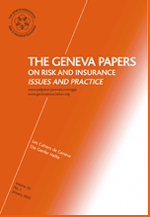
GENEVA PAPERS ON RISK AND INSURANCE-ISSUES AND PRACTICE
Exploring Innovative Solutions in Risk and InsuranceGENEVA PAPERS ON RISK AND INSURANCE-ISSUES AND PRACTICE is a leading academic journal dedicated to advancing the fields of risk management and insurance, published by the esteemed Palgrave Macmillan Ltd. With an ISSN of 1018-5895 and an E-ISSN of 1468-0440, this journal serves as a pivotal platform for sharing cutting-edge research and practical insights addressing a diverse range of issues within the insurance sector. Established in 1999, it spans a wide array of topics, including risk assessment, financial implications, and policy development, contributing to its recognition in the Q2 quartile across multiple categories such as Accounting and Economics. With a notable Scopus ranking reflecting its relevance—ranked #229/716 in Economics and Econometrics, and #106/317 in Finance—it provides invaluable resources for scholars, professionals, and policymakers alike. Despite being a non-open-access journal, the GENEVA PAPERS ensures a rigorous peer-review process, aiming to uphold the highest standards of scholarly publication. Whether you are a researcher looking to publish groundbreaking studies or a practitioner seeking the latest trends and analyses in the insurance landscape, this journal stands out as an essential resource in the domain.

Mathematics and Financial Economics
Innovating Financial Strategies through Mathematical RigorMathematics and Financial Economics, published by Springer Heidelberg, is a leading peer-reviewed journal that explores the intersections of mathematical theories and financial practices. With an ISSN of 1862-9679 and an E-ISSN of 1862-9660, the journal has made notable contributions to its field since its inception in 2007, with a convergence period extending until 2024. Positioned in the prestigious Q2 category for both Finance and Statistics and Probability, the journal is ranked within the top 66th percentile in Mathematics and Statistics and the 62nd percentile in Decision Sciences according to Scopus metrics. Researchers and professionals looking for high-quality, innovative research in mathematical finance will find valuable insights within its pages. Although primarily a subscription-based journal, it aims to foster knowledge sharing among academia and industry experts. Its commitment to advancing quantitative methods and financial applications solidifies its importance as a resource for students, researchers, and practitioners dedicated to understanding and navigating the complex dynamics of financial markets.
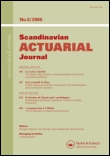
Scandinavian Actuarial Journal
Advancing statistical excellence since 1918.The Scandinavian Actuarial Journal, published by Taylor & Francis Ltd, stands as a pivotal resource in the fields of Economics, Econometrics, Statistics, and Probability, with a legacy dating back to 1918. This esteemed journal, headquartered in the United Kingdom, offers valuable insights and comprehensive research findings that contribute significantly to the actuarial and statistical communities. With its impressive 2023 quartile rankings—Q1 in both Statistics and Probability, and in Statistics, Probability and Uncertainty, as well as Q2 in Economics and Econometrics—this journal is recognized for its high-quality peer-reviewed content, making it indispensable for researchers, professionals, and students alike. Although it currently does not operate under an Open Access model, the journal ensures rigorous academic standards and broad visibility within its field. With a Scopus rank placing it in the top quartile of relevant categories, the Scandinavian Actuarial Journal is committed to advancing knowledge and fostering innovation in statistical methodologies and insights.
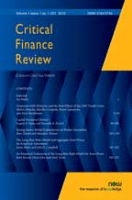
Critical Finance Review
Exploring the complexities of finance with rigor and insight.Critical Finance Review is a premier academic journal dedicated to advancing the field of finance through the publication of high-quality research that spans various dimensions of the discipline. Published by NOW PUBLISHERS INC, this journal has quickly established itself as a leading source of innovative finance scholarship, achieving a notable Q1 classification in the 2023 finance category. Operating under a rigorous peer-review process, the journal ensures the academic integrity and relevance of its content, which attracts contributions from both emerging and established scholars. With an ISSN of 2164-5744 and E-ISSN 2164-5760, it is accessible to a global audience, though it operates under traditional access models. The journal welcomes a diverse range of topics including, but not limited to, risk management, financial markets, and quantitative finance, making it an essential resource for researchers, professionals, and students who are keen to explore the complexities of financial systems and develop new insights in the ever-evolving landscape of finance. Based in the United States, Critical Finance Review holds a significant position within the academic community, fostering a collaborative environment that encourages innovative thinking and practical applications of financial theories.